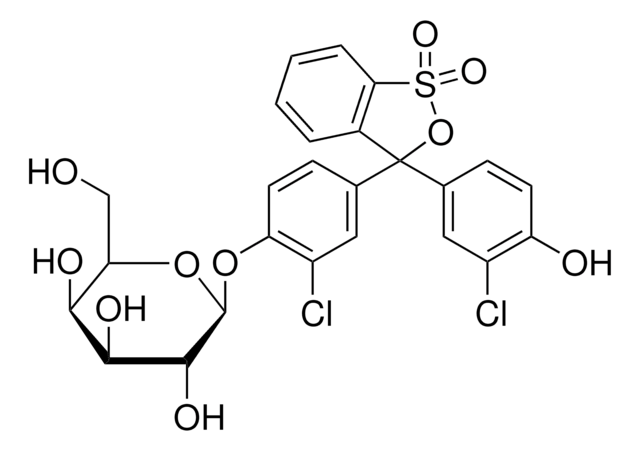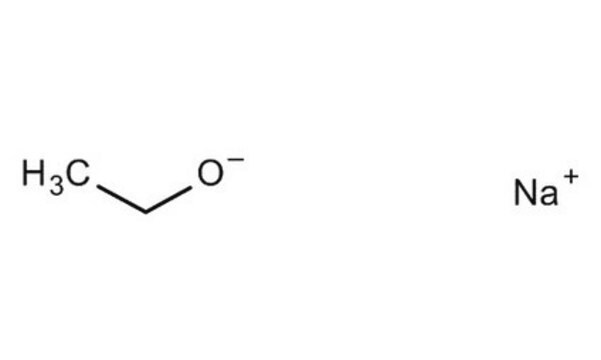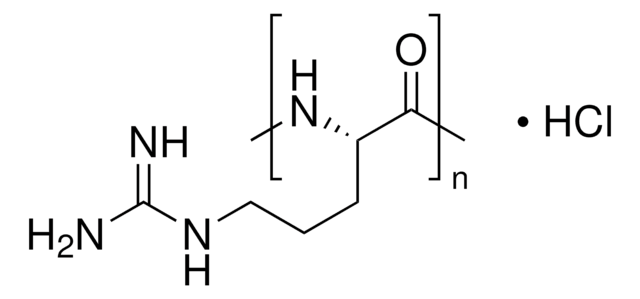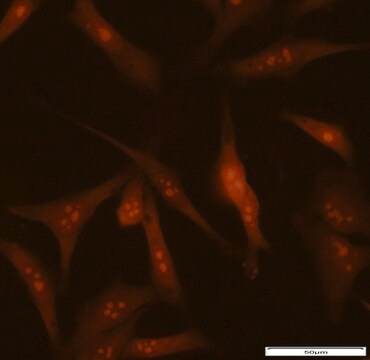SCP0169
HIV-1 Tat Peptide
≥95% (HPLC), lyophilized powder
Sign Into View Organizational & Contract Pricing
All Photos(1)
About This Item
Empirical Formula (Hill Notation):
C65H124N34O13
Molecular Weight:
1589.90
UNSPSC Code:
12352202
NACRES:
NA.32
Recommended Products
Product Name
HIV-TAT (48-57),
Assay
≥95% (HPLC)
form
lyophilized
composition
Peptide Content, ≥55%
storage condition
protect from light
storage temp.
−20°C
Amino Acid Sequence
Gly-Arg-Lys-Lys-Arg-Arg-Gln-Arg-Arg-Arg-Pro-Pro-NH2
General description
Human immunodeficiency virus (HIV)-transactivator of transcription (Tat), a regulatory protein is coded by the Tat gene of HIV-1. Tat is made up of two exons, highly conserved regions, and subtype-specific regions.
Biochem/physiol Actions
Human immunodeficiency virus (HIV)-transactivator of transcription (Tat) participates in the pathogenesis of HIV-related complications. Tat protein is also involved in HIV-related cardiac dysfunction. HIV-TAT (48-57) is used to facilitate the internalization of synthetic peptides.
Storage Class Code
11 - Combustible Solids
WGK
nwg
Flash Point(F)
Not applicable
Flash Point(C)
Not applicable
Choose from one of the most recent versions:
Certificates of Analysis (COA)
Lot/Batch Number
Don't see the Right Version?
If you require a particular version, you can look up a specific certificate by the Lot or Batch number.
Already Own This Product?
Find documentation for the products that you have recently purchased in the Document Library.
S-M Lee et al.
Clinical and experimental immunology, 167(3), 438-446 (2012-02-01)
The immune receptor expressed on myeloid cells 1 (IREM-1/CD300F) has been shown to inhibit various inflammatory processes in myeloid cells, such as macrophages and mast cells. IREM-1 exerts its inhibitory effect through its intracellular immunoreceptor tyrosine-based inhibition motifs (ITIMs). In
S-M Lee et al.
Clinical and experimental immunology, 161(3), 504-511 (2010-07-22)
The immune receptor expressed on myeloid cells 1 (IREM-1) has been known to regulate the activities of myeloid cells through its immunoreceptor tyrosine-based inhibition motifs (ITIMs) in its intracellular region. In order to investigate its effect on macrophage activation, a
Our team of scientists has experience in all areas of research including Life Science, Material Science, Chemical Synthesis, Chromatography, Analytical and many others.
Contact Technical Service








